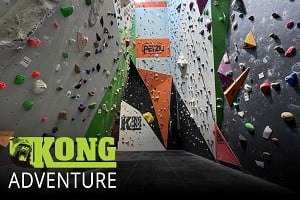I would like to try these for protection in my local rock, which people in my climbing club dismiss as no use for very much at all and only good for top-rope climbing. However, I have actually located a decent 20 metre slab which I and various friends have climbed and which has several routes around VS and HVS levels.
One particularly bold climbing partner did manage to lead it and placed some protection, getting half-way up before asking me to lower him off because the onset of drizzle made the rock very greasy. The rock is "mostly igneous and metamorphic rocks from the late Precambrian, known as the Uriconian, which are around 680 million years old". It was originally sediment that overlay a volcano and got heated, compressed and moved around a bit, so it's hard and quite fractured.
Moses claim that their Tomahawk pitons don't need to be hammered - they can be hand-placed and cleaned up afterwards without damaging the rock any more than other trad. protection. They look as if they could be placed in the very thin seams and cracks that are a feature of the rock in question, where even micro-nuts would often be too big.
I'd like to try Tomahawks out, but they're not cheap and I'd have to order them online. Before I do that - has anyone here any experience of using them?
P.S. Obviously with rock of this type, placing such devices behind small flakes could easily break the rock, so please, no excursions into 'elf-n-safety' as that might distract answers from the kind of useful information that I hope to elicit here.
Post edited at 13:27
